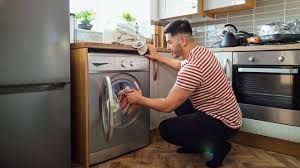What Do Dryer Sheets Do?
Dryer sheets are a staple in many households, known for their ability to enhance the laundry experience. But what exactly do dryer sheets do, and how do they work? This article delves into the science behind dryer sheets, their benefits, potential drawbacks, and alternative options, providing a thorough understanding of these ubiquitous laundry aids.
The Science Behind Dryer Sheets
Dryer sheets are typically thin, fabric-like pieces infused with a combination of chemicals and fragrances. Their primary function is to reduce static electricity, soften fabrics, and impart a pleasant scent to laundry. Here's a closer look at how they achieve these effects:
- Reducing Static Cling Static electricity builds up in the dryer due to the friction between clothes, especially those made of synthetic fibers. This causes clothes to stick together, making them difficult to separate. Dryer sheets contain compounds called surfactants, which are positively charged. These surfactants are transferred to the surface of fabrics during the drying process, neutralizing the negatively charged particles that cause static cling. This helps keep clothes separate and makes them easier to handle.
- Softening Fabrics Dryer sheets coat fabrics with a thin layer of lubricating chemicals, such as quaternary ammonium compounds or fatty acids. These compounds make the fibers feel smoother and softer to the touch. This coating can also reduce friction between fibers, which helps prevent wear and tear, extending the life of your clothes.
- Adding Fragrance Many dryer sheets are infused with fragrances that are transferred to clothes during the drying process. These fragrances help mask any unpleasant odors that might linger in the fabric, leaving laundry smelling fresh and clean.
The Benefits of Using Dryer Sheets
- Improved Fabric Feel One of the most immediate benefits of dryer sheets is the improved texture of fabrics. Clothes come out of the dryer feeling softer and more pleasant to the touch, enhancing overall comfort.
- Static Reduction By minimizing static cling, dryer sheets make it easier to fold and handle laundry. This is especially useful for synthetic fabrics, which are more prone to static buildup.
- Pleasant Scent The added fragrance from dryer sheets can make your laundry smell delightful. This is particularly beneficial for items that tend to retain odors, such as workout clothes or towels.
- Convenience Dryer sheets are easy to use. Simply toss one or two sheets into the dryer with your laundry, and they do the rest. There's no need for additional steps or products.
- Wrinkle Reduction By reducing friction and static, dryer sheets can help minimize wrinkles in your clothes, making ironing easier or even unnecessary in some cases.
Potential Drawbacks of Dryer Sheets
While dryer sheets offer numerous benefits, they are not without potential drawbacks:
- Chemical Residue The chemicals in dryer sheets can leave a residue on fabrics, which might cause skin irritation for some people, particularly those with sensitive skin or allergies. Residue can also build up in the dryer, potentially affecting its efficiency and lifespan.
- Reduced Absorbency The fabric-softening agents in dryer sheets can coat towels and other absorbent fabrics, reducing their ability to absorb water. This can be problematic for bath towels and cloth diapers.
- Environmental Impact Many dryer sheets are not biodegradable, contributing to landfill waste. Additionally, the production and disposal of dryer sheets involve the use of chemicals that can be harmful to the environment.
- Cost While not excessively expensive, the cost of dryer sheets can add up over time, especially for large households or frequent laundry-doers.
Alternatives to Dryer Sheets
For those concerned about the potential drawbacks of dryer sheets, there are several alternative options to consider:
- Wool Dryer Balls Wool dryer balls are a natural alternative to dryer sheets. They work by tumbling between clothes in the dryer, helping to separate fabrics and reduce static. They can also shorten drying time by improving air circulation. Some people add a few drops of essential oils to wool dryer balls for a natural fragrance.
- Vinegar Adding a half cup of white vinegar to the rinse cycle of your washing machine can act as a natural fabric softener and help reduce static. Vinegar is inexpensive, eco-friendly, and doesn't leave a residue on clothes.
- Baking Soda Adding a half cup of baking soda to your laundry can also help soften fabrics and reduce odors. It’s a natural and cost-effective alternative to dryer sheets.
- Reusable Dryer Sheets Reusable dryer sheets are made from fabric infused with fabric softening agents. They can be used multiple times, reducing waste and cost. Some brands offer fragrance-free options for those with sensitive skin.
- Aluminum Foil Balls Rolling a sheet of aluminum foil into a ball and tossing it into the dryer can help reduce static cling. This method is inexpensive and reusable, but it doesn't provide the softening or fragrance benefits of traditional dryer sheets.
Making Your Own Dryer Sheets
For those who prefer a DIY approach, making your own dryer sheets is a simple and customizable option. Here’s a basic recipe:
Materials:
- Fabric scraps or old t-shirts cut into squares
- 1 cup of white vinegar
- 20-30 drops of essential oil (optional, for fragrance)
- A container with a lid
Instructions:
- Mix the vinegar and essential oil (if using) in the container.
- Add the fabric squares to the container and let them soak up the liquid.
- When ready to use, wring out a fabric square and toss it into the dryer with your laundry.
- After use, return the fabric square to the container to soak up more liquid for the next use.
This method allows you to control the ingredients and avoid the chemicals found in commercial dryer sheets.
An Informed Choice
Dryer sheets play a significant role in enhancing the laundry process by reducing static cling, softening fabrics, and adding a pleasant fragrance. While they offer numerous benefits, including improved fabric feel and convenience, they also come with potential drawbacks such as chemical residue, reduced fabric absorbency, and environmental impact.
For those looking for alternatives, options like wool dryer balls, vinegar, baking soda, reusable dryer sheets, and even aluminum foil balls offer effective solutions. Additionally, making your own dryer sheets allows for customization and control over the ingredients used.
Ultimately, the choice of whether to use dryer sheets or an alternative comes down to personal preference and priorities regarding convenience, cost, and environmental impact. By understanding the functions and effects of dryer sheets, you can make an informed decision that best suits your laundry needs.
You might also like
Educational Center
Book a Service Today
We will get back to you as soon as possible
Please try again later
Quick & Reliable
We are available 24/7
About Us
Authorized Appliance is an appliance repair contractor referral service. We connect you with appliance contractor in your area. All contractors are operated independently of Authorized Appliance. It is the responsibility of each user to verify that the contractor connected with meets all licensing and insurance requirements in that jurisdiction.
All Rights Reserved - Authorized Appliance




